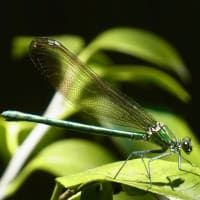■マリナー&ベッチャーによる Brahmsダブルコンチェルトの名演■
~Academy of St. Martin-in-the-Fieldsのネヴィル・マリナー逝去~
2016.10.4 中村洋子

★Academy of St. Martin-in-the-Fieldsの指揮者
「Sir Neville Marrinerネヴィル・マリナー死去」が、
報道されました。
-------------------------------------------------------
Sir Neville Marriner
15 April 1924 - 2 October 2016
http://www.asmf.org/sir-neville-marriner/
The Academy of St Martin in the Fields is deeply saddened to announce the death of Sir Neville Marriner, Founder and Life President of the Academy of St Martin in the Fields.
Sir Neville Marriner passed away peacefully in the night on 2 October.
Born on 15 April 1924 in Lincoln, Sir Neville Marriner studied at the Royal College of Music and the Paris Conservatoire. He began his career as a violinist, playing first in a string quartet and trio, then in the London Symphony Orchestra. It was during this period that he founded the Academy, with the aim of forming a top-class chamber ensemble from London’s finest players. Beginning as a group of friends who gathered to rehearse in Sir Neville’s front room, the Academy gave its first performance in its namesake church in 1959. The Academy now enjoys one of the largest discographies of any chamber orchestra worldwide, and its partnership with Sir Neville Marriner is the most recorded of any orchestra and conductor.
Honoured three times for his services to music in this country – most recently being made a Companion of Honour by Her Majesty The Queen in June 2015 – Sir Neville Marriner has also been awarded honours in France, Germany and Sweden.
As a player, Sir Neville Marriner had observed some of the greatest conductors at close quarters. He worked as an extra under Toscanini and Furtwängler, with Joseph Krips, George Szell, Stokowski and mentor Pierre Monteux. Sir Neville began his conducting career in 1969, after his studies in America with Maestro Monteux. There he founded the Los Angeles Chamber Orchestra, at the same time as developing and extending the size and repertoire of the Academy. In 1979 he became Music Director and Principal Conductor of both the Minnesota Orchestra and the Südwest Deutsche Radio Orchestra in Stuttgart, positions he held until the late 1980s. Subsequently he has continued to work with orchestras round the globe in Vienna, Berlin, Paris, Milan, Athens, New York, Boston, San Francisco and Tokyo. In 2011 Sir Neville was appointed Honorary Conductor of the newly formed I, Culture Orchestra which brings together the most talented young musicians from Eastern Europe. Sir Neville was Music Director of the Academy from its formation in1958 to 2011 when he became Life President and handed the baton of Music Director to violinist Joshua Bell.
Academy Music Director, Joshua Bell said: “I am deeply saddened by the news of Sir Neville Marriner’s passing. He was one of the most extraordinary human beings I have ever known. I will remember him for his brilliance, his integrity, and his humor, both on and off the concert platform. Maestro Marriner will always be the heart and soul of the Academy of St Martin in the Fields, and we musicians of the orchestra will miss him dearly.”
Chairman of the Academy, Paul Aylieff said: “We are greatly saddened by today’s news. Sir Neville’s artistic and recording legacy, not only with the Academy but with orchestras and audiences worldwide is immense. He will be greatly missed by all who knew and worked with him and the Academy will ensure it continues to be an excellent and fitting testament to Sir Neville.”
The Marriner family are very touched by all the messages of sympathy from people reminding them how much fun it was to be with Neville.
(Sir Neville Marriner、 1924年4月15日 - 2016年10月2日)

★ Marriner マリナーが指揮した曲の中で、
私は、Brahms Doppelkonzert + Weber Fagottkonzertを、
よく聴きます(Brahmsは1980年録音)。
(CAPRICCIO 10496)
★Brahmsの Doppelkonzert ダブルコンチェルト
「Cocerto for violin, cello and orchestra Op.102」の独奏チェロは、
Wolfgang Boettcher ヴォルフガング・ベッチャー先生が、
弾かれています。
ヴァイオリンは、Ulf Hoelscher さんです。
★Johannes Brahms ブラームス (1833-1897)が1887年に作曲し、
同年10月初演の作品です。
規模の大きなオーケストラ作品としては、この曲が最後です。
★第2ピアノ協奏曲が、1881年作曲初演、
第4交響曲が1884~5年に作曲され、85年初演。
この二作品に続く曲です。
★この曲の第1楽章冒頭4小節は、オーケストラの前奏です。
前奏といいましても、冒頭4小節間に、この曲の全ての要素が含まれる、
という手法は、Bach、Beethoven と同じです。
それが ≪名曲の要件≫とも言えます。

★この4小節間を Piano reduction
(オーケストラの総譜を一人で演奏できるよう、ピアノ用楽譜に編曲すること)
してみましょう。
★1、2小節は、一番上の音を「e³ d³ h²」 「c³ h² e²」とする
ユニゾンの tutti(総奏)です。

3、4小節は、フルートと第1、第2ヴァイオリンがユニゾンです。

フルートと第1ヴァイオリンの3小節目は、
「fis² gis² a² gis² a² h²」、
4小節目は「a² h² c³ d³ e³ f³」です。

ともに、大地に足を踏みしめるような3連符です。
★5小節から25小節までの21小節間、
オーケストラはピタリと鳴り止みます。
4小節目後半の「d³ e³ f³」を、5小節の独奏Celloが、
「D E F」のカノンで引き継ぎ、
低く、深く、朗々と 歌い始めます。

★5小節目の「D E F」は、8小節目に1オクターブ高い「d e f」で、
カノンを形成します。
その8小節目は、「d e f」を下声とする二声です 。
その上声は「f¹ e¹ d¹」となり、「d e f」の反行形(逆行形も同じ)です。
★独奏Celloの15小節目「e¹ d¹ h c¹ h e」は、

冒頭1、2小節目の、
オーケストラのユニゾンの中で、Fagott、Viola、Celloで奏される
「e¹ d¹ h c¹ h e」の変形です。
(このe¹ d¹ h c¹ h eは、最初の掲載譜に赤字で書かれた声部です)
★更に、16小節になりますと、「e¹ d¹ h」は、縮小形となり、
畳み掛けられてきます。
これが、Brahmsの 「counterpoint 対位法」 です。

★前回のブログ「Italienisches Konzert イタリア協奏曲」1楽章で、
ご説明しました技法と同じであることに、お気づきでしょう。
★ Boettcher ベッチャー先生と Marriner マリナーの演奏を
CDでじっくりと聴きながら、Brahmsの作品に宿る Bachについて
考えることができました。
それは、演奏が素晴らしいからです。
★この曲 Doppelkonzert ダブルコンチェルト
「Cocerto for violin, cello and orchestra」は、
1楽章はいま分析した通りですが、
3楽章も、独奏Celloがオーケストラの伴奏を伴って、
冒頭から11小節目まで軽やかに歌います。
11小節目から、独奏Violinが、その旋律を2オクターブ高く
模倣します。
ここでもCelloが主導しています。
★Brahmsの師とも言える Robert Schumann
ロベルト・シューマン(1810-1856)の晩年の傑作
「CelloConcerto Op.129」が、彼の脳裏に焼き付いていた
のであろうと、私は思います。

★このように、深く考察できますのは、
演奏が、楽曲のもつ 「counterpoint 対位法」を、
明確に、指し示しているからでしょう。
★音楽に集中しますと、絵画の本を読みたくなります。
いま、Henri Matisse アンリ・マティス(1869-1954)の、
「マティス 画家のノート」(みすず書房)を、再読しています。
★学生時代、何度も読んだ本ですが、当時、図書館で
借りて読んでいました(みすず書房の本は高価すぎました)。
近年、「書物復権」企画として、再び出版されました同書を
求めました。
★特に、印象に残った所を一部ご紹介します。
マティスは「セザンヌを尊敬している」とインタビューアーに、
正直に語りました。
インタビューアーは「それを言うのは危険ではないか」と、問いただしました。
マティス「それに堪えられるだけの力を持たない人たちには気の毒だが、
仕方ない。影響にめげずに堪えられるだけの逞しさがないというのは、
無能の証拠です」(91ページ)
★これは、BachとBrahmsの関係と同じですね。
Brahmsの中に、いくらBachの影響を読み取りましても、
それは100パーセント Brahmsの音楽であり、
Bachの音楽ではないでしょう。
どんなに深く、Bachから影響を受けていても、
Brahmsの個性は、Bachを咀嚼し、Brahmsにしか書けない
Brahmsの音楽を作曲したのです。

※copyright © Yoko Nakamura
All Rights Reserved
▼▲▽△無断での転載、引用は固くお断りいたします▽△▼▲

























